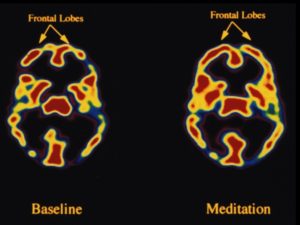The Value of Meditating in the Early Morning

This morning I decided to write down a few reasons why you should do early morning meditation and yoga.
It is vitally important not to have any attachment or expectations about beginning an early morning practice.
The Aquarian Age is motivated by inspiration – not by dogma and rules.
Why Meditate Early in the Morning?
Sadhna means spiritual discipline, and in the Kundalini Yoga tradition, this is generally taken to mean a daily early morning practice (though it could mean a practice at another time of the day).
It is a commitment made by the mind and body to serve the soul.
“A time each day to notice the patterns that lead us away from higher consciousness and to transcend those patterns.”
Every 72 hours, all the cells in our bodies change.
Our motivation waxes and wanes, our physical strength and capacity fluctuates, but through all the change going on in ourselves and in our lives, we have the chance to maintain a regular practice.
In the Kundalini Upanishads, 2.5 hours was understood to be 1/10 of your day (the Vedic Indian culture lived by the cycles of nature rather than the 24 hour clock!).
It was determined that if you give 1/10 of your day to developing your higher consciousness, your whole day is covered by the energy return.
When is the Best Time to Meditate?
Before sunrise, typically between 4:00-5:00 AM, or at least having done some kind of practice before 7:30-8.
The stillness and cleaner air makes it a great time to breathe deeply, cleanse the body and mind, and meet the day on your terms.
If we get up when it’s still dark, we need to switch on our own inner light and face our shadow self.
The birds start to sing their joyful songs, giving us the opportunity to uplift ourselves.
The collective ego mind of the world is mostly still asleep, so there’s less psychic interference (after sunrise, the mind is less controllable as the energy is more scattered – the angle of the sun at 60 degrees is ideal).
Metabolism is also slower (body temp is coolest at 4:00 AM); the atmosphere is cooler, therefore there is less heat and less agitation in the mind and body.
Having a cold shower while your body temperature is at its lowest will not only set you up for practicing yoga with a clearer mind, you will improve the body’s circulation (when the body is hit with cold water when it’s temperature is already lower, the circulation has to work harder – blood is forced from the organs to the periphery – so that while you may feel cold at first, you will feel warm once you start to dry off).
Note: It is far more difficult to meditate deeply if your circulation is still in patterns dictated by sleep and feeling drowsy.
Amrit Vela and The Chinese Body Clock
In the early morning hours known as Amrit Vela (the time when nectar rains down), the mind is more receptive to thoughts and you have more clarity to assess them.
It’s a time when, if in bed, we tend to dream more.
This is the REM (Rapid Eye Movement) sleep which is lighter.
The body is more restless than when in the deeper periods of sleep that came earlier, so when you wake up early you think that you may be tired later, but the converse is actually true (especially if you increase the energy you get from meditating with others).
Some people claim that it’s important to dream and to attempt to analyse our dreams, but sleep can also be dream disturbed (which is often simply a psychic detoxification).
Good quality sleep is when we ‘sleep like a log’, and awake refreshed with occasional dreams that are genuinely insightful and profound (that that often!).
The Chinese Body Clock shows that the Lungs are their strongest between 3:00-5:00 AM, therefore activating them through deep and rhythmic breathing during this time is beneficial.
Between 5:00-7:00 AM is the time of the colon, so it’s good to get the bowels moving early!
Between 7 and 9 we start to build an appetite for breakfast which is the time of the stomach.
The colon is also our shock absorber – the dumping ground physically and psychically so that subconscious fears that are stuck in the lower 3 chakras can be addressed at this time.
We must, of course, manage our need for sleep, so there will be times when we need to rest more
.
The ideal scenario is to wake up without an alarm, but a certain training is usually needed to set a regular routine and rhythm, which is why a group sadhana is ideal.





